
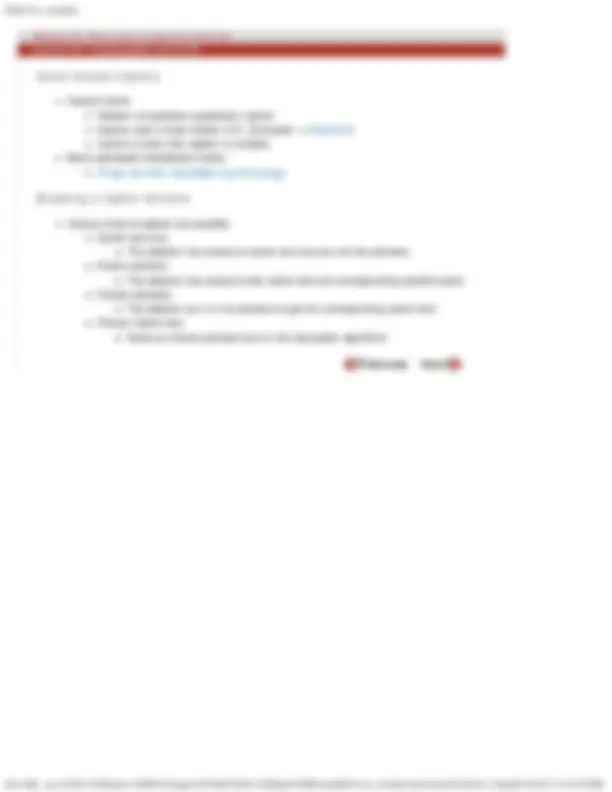
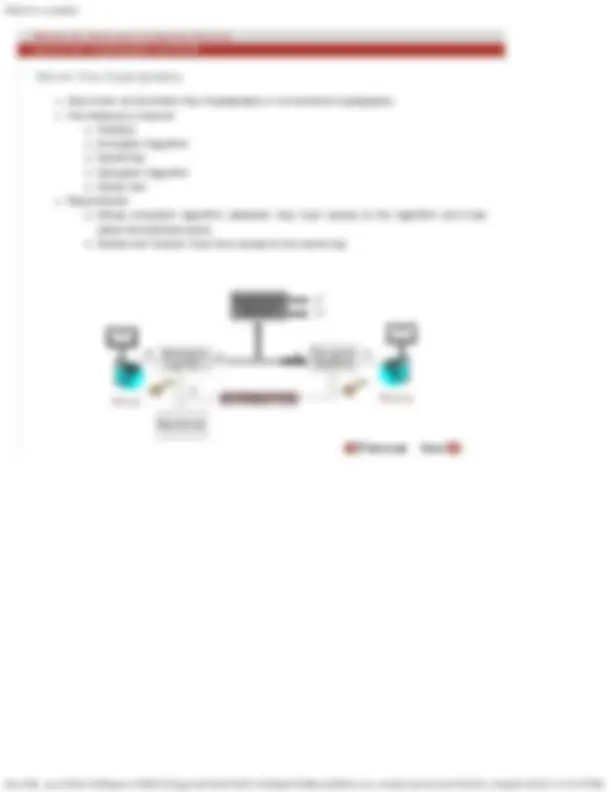
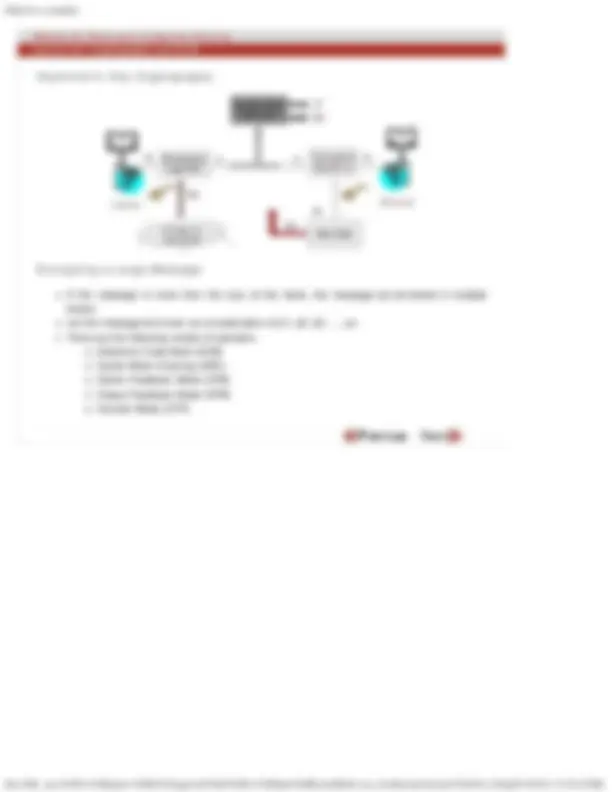
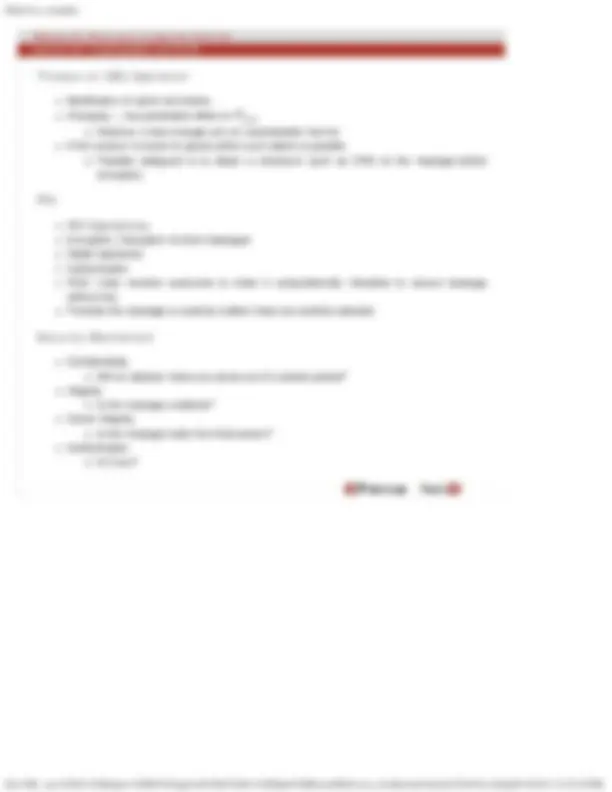
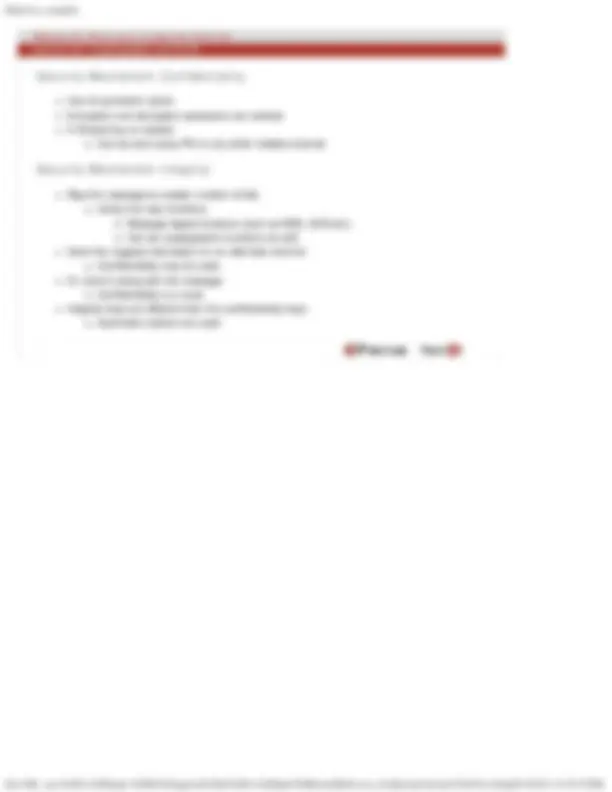
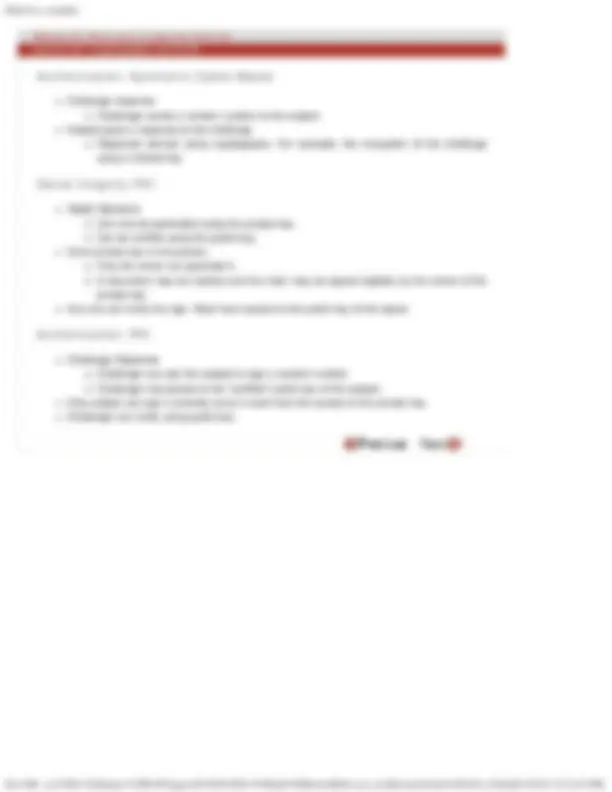


Study with the several resources on Docsity

Earn points by helping other students or get them with a premium plan


Prepare for your exams
Study with the several resources on Docsity

Earn points to download
Earn points by helping other students or get them with a premium plan
Community
Ask the community for help and clear up your study doubts
Discover the best universities in your country according to Docsity users
Free resources
Download our free guides on studying techniques, anxiety management strategies, and thesis advice from Docsity tutors
A series of lecture notes on cryptography and electronic code book (ecb) mode of operation from module 22 of multi-core computing security. The notes cover various topics such as cryptography, algorithms, ciphers, breaking a cipher scheme, secret key cryptography, asymmetric key cryptography, encrypting a large message, threats on ecb, cbc mode of encryption, cbc mode of decryption, threats on cbc operation, pki, security mechanisms, confidentiality, integrity, authentication, and symmetric cipher based and pki based authentication.
Typology: Slides
1 / 10

This page cannot be seen from the preview
Don't miss anything!







Cryptographers: (good guys) Invent clever algorithms Cryptanalysts: (bad guys) Attempt to break algorithms If lots of smart people have failed to solve a problem, then it probably won’t be solved, at least in near future. Cryptography systems depend upon computationally difficult problems which become simple when a secret (key) is known.
Some believe that keeping the algorithm secret enhances its security Some believe that publishing the algorithm will enhance the security. Difficult to keep the algorithm secret Common practice: Commercial algorithms are public while military applications keep it secret.
Also known as Symmetric Key Cryptography or conventional cryptography. The following is relevant Plaintext Encryption Algorithm Secret Key Decryption Algorithm Cipher-text Requirements Strong encryption algorithm (attackers may have access to the algorithm and a few cipher-text-plaintext pairs) Sender and receiver must have access to the secret key.
If the message is more than the size of the block, the message can be broken in multiple blocks. Let the message be known as concatenation of p1, p2, p3, …, pn. There are the following modes of operation Electronic Code Book (ECB) Cipher Block Chaining (CBC) Cipher Feedback Mode (CFB) Output Feedback Mode (OFB) Counter Mode (CTR)
The receiver and sender must know key, and IV. Or key, and the method to compute IV.
Modification of cipher text blocks. Changing has predictable effect on. However, it also changes piin an unpredictable manner If the receiver is known to ignore pithen such attack is possible. Possible safeguard is to attach a checksum (such as CRC) to the message before encryption.
PKI Operations: Encryption, Decryption of short messages Digital signatures Authentication RSA: Uses modular exponents to make it computationally infeasible to recover message without key. Provided the message is carefully crafted. Keys are carefully selected.
Confidentiality Will an attacker make any sense out of a picked packet? Integrity Is the message unaltered? Owner Integrity Is the message really from that person? Authentication Is it you?
file:///D|/...ry,%20Dr.%20Sanjeev%20K%20Aggrwal%20&%20Dr.%20Rajat%20Moona/Multi-core_Architecture/lecture%2044/44_10.htm[6/14/2012 12:19:43 PM]
Challenge response Challenger sends a random number to the subject. Subject gives a response to the challenge Response derived using cryptography. For example, the encryption of the challenge using a shared key.
Digital Signature Can only be generated using the private key. Can be verified using the public key. Since private key is one person, Only the owner can generate it. A document may be hashed and the hash may be signed digitally by the owner of the private key. Any one can verify the sign. Must have access to the public key of the signer.
Challenge-Response Challenger can ask the subject to sign a random number Challenger has access to the “certified” public key of the subject. Only subject can sign it correctly since it must have the access to the private key. Challenger can verify using public key.